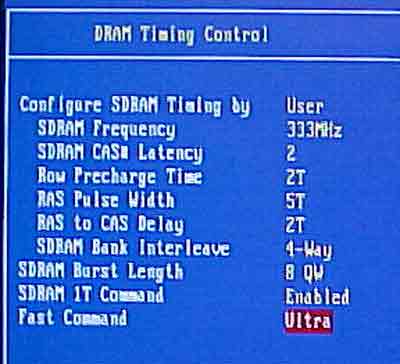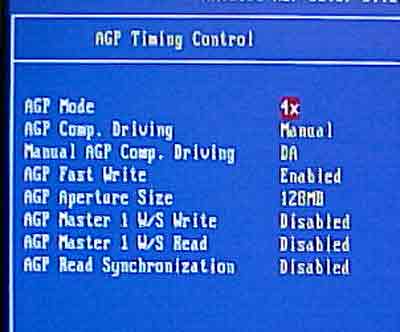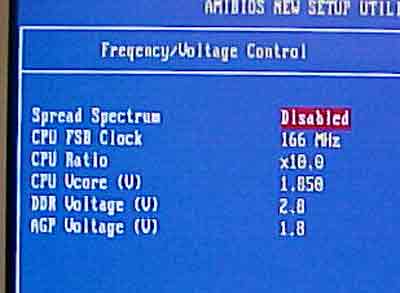KT3 Ultra BIOS
The MSI KT3 Ultra-ARU uses a
new version of the Award BIOS. It looks like it has been upgraded, as
things are sorted a little better. In typical MSI fashion, the BIOS caters
towards everyone (normal and performance users) by sporting quite a few memory tweaks and overclocking
options!

Since
the KT3 Ultra-ARU uses the KT333 chipset you can run your RAM at 333 MHz, however if the memory
can't handle the speed, you can still select 266 MHz or 200 MHz. There are
the obvious CAS latency adjustments, RAS to CAS and I personally like being able
to force 4-Way bank interleaving.

AGP tweaks are set to AGP frequency of 1x, 2x or 4x. By
default the "AGP Comp. Driving" is set to "CB" however I know in the
Abit KR7A and the Epox 8KHA+ it is set to "DA" so
I tried that setting and my 3DMark score improve about 100
points.
I'm not completely sure
how to tweak this setting, but it's possible that MSI used a more conservative
setting for stability purposes. All benchmarks were conducted with this set to
DA and we didn't experience any problems, just better 3D performance
results.

The KT3
Ultra-ARU allows a overclocker to max out their CPU with the ability to tune the FSB from
100-220 MHz in 1 MHz increments. Of course, there are a full set of multiplier adjustments;
VCore can be moved from 1.7-1.85V, and DDR voltage can be changed
from 2.5-2.8V. This came in quite handy since our Corsair XMS PC2400 only does
166 MHz with a voltage of 2.8V. AGP voltage controls are nice especially when
you're hitting those really high FSB's as it might stabilize a shaky
videocard.
As for overclocking, for some reason, our Corsair XMS PC2400 maxed out at 168
MHz FSB (down from the 171 MHz it does in the 8KHA+ and
KR7). To explore the limits of the board we used PC3000 DDR RAM. The board ran
all the way up to 175 MHz, but anything higher and it would BSOD when
loading Windows 2000.
Unfortunately while the PC3000 is fast, it needs to have a high FSB
to achieve its best performance. At 175 MHz with relaxed memory timings the
PC3000 just wasn't as fast as our Corsair XMS PC2400. Still it was nice to
know the limits of our board since the PC3000 will do 200 MHz FSB on
our ABit KR7.
|
